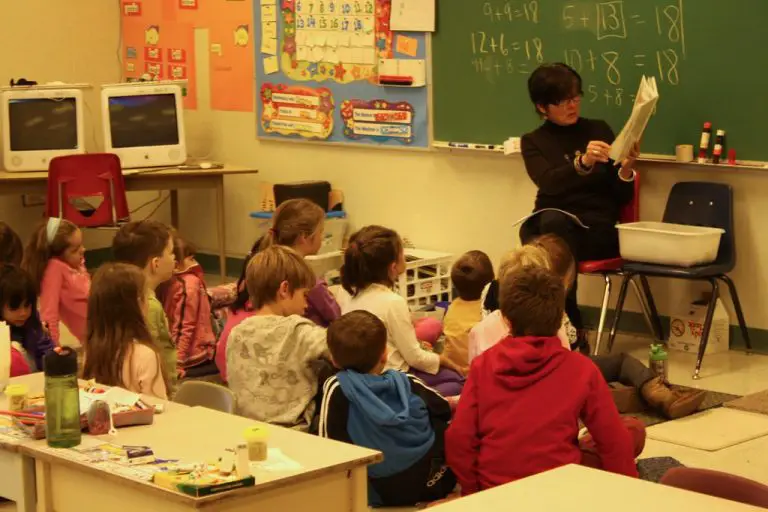Support our educational content for free when you buy through links on our site. Learn more
10 Principles of Teaching and Learning [2024]
Did you know that there are specific principles that can greatly enhance the teaching and learning experience? These principles are based on years of research and have been proven to be effective in the classroom. In this article, we will explore the 10 principles of teaching and learning that every educator should know. Whether you are a seasoned teacher or just starting out, these principles will help you create a positive and engaging learning environment for your students.
Quick Answer
The 10 principles of teaching and learning are:
- Prior knowledge is the foundation for new learning.
- Active engagement enhances learning.
- Clear learning goals promote student achievement.
- Feedback is essential for growth and improvement.
- Collaboration fosters deeper understanding.
- Metacognition helps students become independent learners.
- Differentiated instruction meets the needs of all learners.
- Assessment drives instruction and monitors progress.
- Classroom climate affects learning outcomes.
- Reflective practice leads to professional growth.
Now, let’s dive deeper into each of these principles and explore how they can be applied in the classroom.
Quick Tips and Facts
- These principles are based on extensive research in the field of education.
- They can be applied to various grade levels and subject areas.
- Implementing these principles requires intentional planning and instructional strategies.
- Teachers should continuously reflect on their practice and make adjustments as needed.
1. Prior knowledge is the foundation for new learning.
✅ Key Point: Building on students’ prior knowledge helps them make connections and understand new concepts more effectively.
When introducing new content, it is essential to activate students’ prior knowledge. This can be done through pre-assessments, discussions, or brainstorming activities. By connecting new information to what students already know, they are more likely to engage with the material and retain it in the long term.
🔗 Related Links: Differentiated Instruction
2. Active engagement enhances learning.
✅ Key Point: Students learn best when they are actively involved in the learning process.
Passive learning, such as listening to lectures or reading textbooks, is not as effective as engaging students in hands-on activities, discussions, and problem-solving tasks. Incorporating active learning strategies, such as group work, simulations, and experiments, promotes deeper understanding and critical thinking skills.
🔗 Related Links: Classroom Management
3. Clear learning goals promote student achievement.
✅ Key Point: Clearly defined learning goals help students understand what they are expected to learn and achieve.
When students know what they are working towards, they are more motivated and focused. Teachers should communicate learning goals to students and provide clear explanations of what success looks like. This clarity empowers students to take ownership of their learning and track their progress.
🔗 Related Links: Lesson Planning
4. Feedback is essential for growth and improvement.
✅ Key Point: Timely and specific feedback helps students understand their strengths and areas for improvement.
Feedback plays a crucial role in the learning process. It helps students identify their mistakes, correct misconceptions, and set goals for improvement. Teachers should provide both formative and summative feedback, focusing on specific learning objectives and offering constructive suggestions for growth.
🔗 Related Links: Instructional Coaching
5. Collaboration fosters deeper understanding.
✅ Key Point: Collaborative learning activities promote teamwork, communication, and critical thinking skills.
When students work together in groups or pairs, they learn from each other’s perspectives and experiences. Collaborative activities can include discussions, projects, and problem-solving tasks. By engaging in collaborative learning, students develop important social and emotional skills while deepening their understanding of the content.
🔗 Related Links: Differentiated Instruction
6. Metacognition helps students become independent learners.
✅ Key Point: Teaching students to think about their thinking (metacognition) improves their ability to monitor and regulate their learning.
Metacognition involves students reflecting on their learning process, identifying strategies that work best for them, and making adjustments when needed. Teachers can promote metacognition by asking students to set goals, self-assess their progress, and reflect on their learning experiences.
🔗 Related Links: Classroom Management
7. Differentiated instruction meets the needs of all learners.
✅ Key Point: Adapting instruction to meet the diverse needs of students enhances their learning experiences.
Every student has unique strengths, interests, and learning styles. Differentiated instruction involves tailoring teaching methods, materials, and assessments to accommodate these differences. By providing multiple pathways to learning, teachers can ensure that all students have the opportunity to succeed.
🔗 Related Links: Lesson Planning
8. Assessment drives instruction and monitors progress.
✅ Key Point: Regular assessment helps teachers understand what students have learned and adjust their instruction accordingly.
Assessment is not just about assigning grades; it is a tool for gathering evidence of student learning. Teachers should use a variety of assessment methods, such as quizzes, projects, and observations, to gauge student understanding. This information guides instructional decisions and allows for targeted interventions when necessary.
🔗 Related Links: Instructional Coaching
9. Classroom climate affects learning outcomes.
✅ Key Point: A positive and inclusive classroom climate promotes student engagement and academic success.
Creating a safe and supportive learning environment is essential for student well-being and learning. Teachers should establish clear expectations, foster positive relationships, and address any instances of bullying or discrimination. When students feel valued and respected, they are more likely to actively participate and take risks in their learning.
🔗 Related Links: Classroom Management
10. Reflective practice leads to professional growth.
✅ Key Point: Regular reflection on teaching practices helps teachers identify areas for improvement and refine their instructional strategies.
Effective teachers are lifelong learners who continuously reflect on their practice. By analyzing student outcomes, seeking feedback from colleagues, and engaging in professional development opportunities, teachers can refine their instructional techniques and stay current with best practices in education.
🔗 Related Links: Instructional Coaching
FAQ
What are the learning principles in teaching and learning?
The learning principles in teaching and learning are based on research and best practices in education. These principles include activating prior knowledge, promoting active engagement, setting clear learning goals, providing feedback, fostering collaboration, developing metacognitive skills, differentiating instruction, using assessment to drive instruction, creating a positive classroom climate, and engaging in reflective practice.
What are the principles of a teacher?
The principles of a teacher involve acquiring relevant knowledge about students, aligning learning objectives, assessments, and instructional activities, articulating explicit expectations, prioritizing knowledge and skills, recognizing and overcoming blind spots, adopting appropriate teaching roles, and progressively refining courses based on reflection and feedback.
Read more about “What are the 10 Principles of Teaching? …”
What are the six principles of teaching and learning?
The six principles of teaching and learning are:
- Students’ prior knowledge can help or hinder learning.
- How students organize knowledge influences how they learn and apply what they know.
- Students’ motivation determines, directs, and sustains what they do to learn.
- To develop mastery, students must acquire component skills, practice integrating them, and know when to apply what they have learned.
- Goal-directed practice coupled with targeted feedback enhances the quality of students’ learning.
- Students’ current level of development interacts with the social, emotional, and intellectual climate of the course to impact learning.
What are the four basic principles of teaching?
The four basic principles of teaching are:
- Clarity: Teachers should communicate clearly and provide explicit instructions.
- Relevance: Teachers should make learning meaningful and connect it to students’ lives.
- Engagement: Teachers should actively involve students in the learning process.
- Assessment: Teachers should use various assessment methods to monitor student progress and adjust instruction accordingly.
Conclusion
Incorporating the principles of teaching and learning into your classroom can greatly enhance the learning experience for your students. By activating prior knowledge, promoting active engagement, setting clear learning goals, providing feedback, fostering collaboration, developing metacognitive skills, differentiating instruction, using assessment to drive instruction, creating a positive classroom climate, and engaging in reflective practice, you can create a dynamic and effective learning environment.
Remember, teaching is a continuous journey of growth and improvement. By implementing these principles and reflecting on your practice, you can become an even more effective educator and positively impact the lives of your students.
🔗 Recommended Links:
- CHECK PRICE on: Classroom Management Tools
- CHECK PRICE on: Differentiated Instruction Resources
- CHECK PRICE on: Assessment Strategies for Teachers
- Shop Instructional Coaching Books on Amazon
- Shop Lesson Planning Resources on Amazon
- Shop Classroom Management Tools on Amazon
- Shop Differentiated Instruction Resources on Amazon
- Shop Assessment Strategies for Teachers on Amazon
- Teaching & Learning Principles
- What are the 6 Language Teaching Principles Teachers Must Use as a Guide for Effective Language Acquisition and Learning to Take Place? 2024
🔗 Reference Links:



